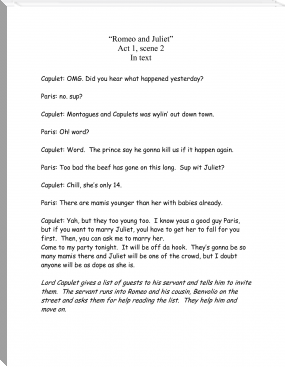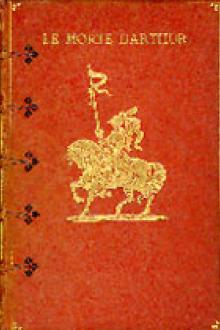The Companions of Jehu, Alexandre Dumas [romance book recommendations TXT] 📗

- Author: Alexandre Dumas
Book online «The Companions of Jehu, Alexandre Dumas [romance book recommendations TXT] 📗». Author Alexandre Dumas
The head being now dressed, the rest was soon done; the cravat alone took time, owing to the many failures that occurred; but Morgan concluded the difficult task with an experienced hand, and as eleven o’clock was striking he was ready to start. Cadenette had not forgotten his errand; a hackney-coach was at the door. Morgan jumped into it, calling out: “Rue du Bac, No. 60.”
The coach turned into the Rue de Grenelle, went up the Rue du Bac, and stopped at No. 60.
“Here’s a double fare, friend,” said Morgan, “on condition that you don’t stand before the door.”
The driver took the three francs and disappeared around the corner of the Rue de Varennes. Morgan glanced up the front of the house; it seemed as though he must be mistaken, so dark and silent was it. But he did not hesitate; he rapped in a peculiar fashion.
The door opened. At the further end of the courtyard was a building, brilliantly lighted. The young man went toward it, and, as he approached, the sound of instruments met his ear. He ascended a flight of stairs and entered the dressing-room. There he gave his cloak to the usher whose business it was to attend to the wraps.
“Here is your number,” said the usher. “As for your weapons, you are to place them in the gallery where you can find them easily.”
Morgan put the number in his trousers pocket, and entered the great gallery transformed into an arsenal. It contained a complete collection of arms of all kinds, pistols, muskets, carbines, swords, and daggers. As the ball might at any moment be invaded by the police, it was necessary that every dancer be prepared to turn defender at an instant’s notice. Laying his weapons aside, Morgan entered the ballroom.
We doubt if any pen could give the reader an adequate idea of the scene of that ball. Generally, as the name “Ball of the Victims” indicated, no one was admitted except by the strange right of having relatives who had either been sent to the scaffold by the Convention or the Commune of Paris, blown to pieces by Collot d’Herbois, or drowned by Carrier. As, however, the victims guillotined during the three years of the Terror far outnumbered the others, the dresses of the majority of those who were present were the clothes of the victims of the scaffold. Thus, most of the young girls, whose mothers and older sisters had fallen by the hands of the executioner, wore the same costume their mothers and sisters had worn for that last lugubrious ceremony; that is to say, a white gown and red shawl, with their hair cut short at the nape of the neck. Some added to this costume, already so characteristic, a detail that was even more significant; they knotted around their necks a thread of scarlet silk, fine as the blade of a razor, which, as in Faust’s Marguerite, at the Witches’ Sabbath, indicated the cut of the knife between the throat and the collar bone.
As for the men who were in the same case, they wore the collars of their coats turned down behind, those of their shirt wide open, their necks bare, and their hair, cut short.
But many had other rights of entrance to this ball besides that of having Victims in their families; some had made victims themselves. These latter were increasing. There were present men of forty or forty-five years of age, who had been trained in the boudoirs of the beautiful courtesans of the seventeenth century—who had known Madame du Barry in the attics of Versailles, Sophie Arnoult with M. de Lauraguais, La Duthé with the Comte d’Artois—who had borrowed from the courtesies of vice the polish with which they covered their ferocity. They were still young and handsome; they entered a salon, tossing their perfumed locks and their scented handkerchiefs; nor was it a useless precaution, for if the odor of musk or verbena had not masked it they would have smelled of blood.
There were men there twenty-five or thirty years old, dressed with extreme elegance, members of the association of Avengers, who seemed possessed with the mania of assassination, the lust of slaughter, the frenzy of blood, which no blood could quench—men who, when the order came to kill, killed all, friends or enemies; men who carried their business methods into the business of murder, giving their bloody checks for the heads of such or such Jacobins, and paying on sight.
There were younger men, eighteen and twenty, almost children, but children fed, like Achilles, on the marrow of wild beasts, like Pyrrhus, on the flesh of bears; here were the pupil-bandits of Schiller, the apprentice-judges of the Sainte-Vehme—that strange generation that follows great political convulsions, like the Titans after chaos, the hydras after the Deluge; as the vultures and crows follow the carnage.
Here was the spectre of iron impassible, implacable, inflexible, which men call Retaliation; and this spectre mingled with the guests. It entered the gilded salons; it signalled with a look, a gesture, a nod, and men followed where it led. It was, as says the author from whom we have borrowed these hitherto unknown but authentic details, “a merry lust for extermination.”
The Terror had affected great cynicism in clothes, a Spartan austerity in its food, the profound contempt of a barbarous people for arts and enjoyments. The Thermidorian reaction was, on the contrary, elegant, opulent, adorned; it exhausted all luxuries, all voluptuous pleasures, as in the days of Louis XV.; with one addition, the luxury of vengeance, the lust of blood.
Fréron’s name was given to the youth of the day, which was called the jeunesse Fréron, or the jéunesse dorée (gilded youth). Why Fréron? Why should he rather than others receive that strange and fatal honor?
I cannot tell you—my researches (those who know me will do me the justice to admit that when I have an end in view, I do not count them)—my researches have not discovered an answer. It was a whim of Fashion, and Fashion is the one goddess more capricious than Fortune.
Our readers will hardly know to-day who Fréron was. The Fréron who was Voltaire’s assailant was better known than he who was the patron of these elegant assassins; one was the son of the other. Louis Stanislas was son of Elie-Catherine. The father died of rage when Miromesnil, Keeper of the Seals, suppressed his journal. The other, irritated by the injustices of which his father had been the victim, had at first ardently embraced the revolutionary doctrines. Instead of the “Année Littéraire,” strangled to death in 1775, he created the “Orateur du Peuple,” in 1789. He was sent to the Midi on a special mission, and Marseilles and Toulon retain to this day the memory of his cruelty. But all was forgotten when, on the 9th Thermidor, he proclaimed himself against Robespierre, and assisted in casting from the altar the Supreme Being, the colossus who, being an apostle, had made himself a god. Fréron, repudiated by the Mountain, which abandoned him to the heavy jaws of Moise Bayle; Fréron, disdainfully repulsed by the Girondins, who delivered him over to the imprecations of Isnard; Fréron, as the terrible and picturesque orator of the Var said, “Fréron naked and covered with the leprosy of crime,” was accepted, caressed and petted by the Thermidorians. From them he passed into the camp of the royalists, and without any reason whatever for obtaining that fatal honor, found himself suddenly at the head of a powerful party of youth, energy and vengeance, standing between the





Comments (0)